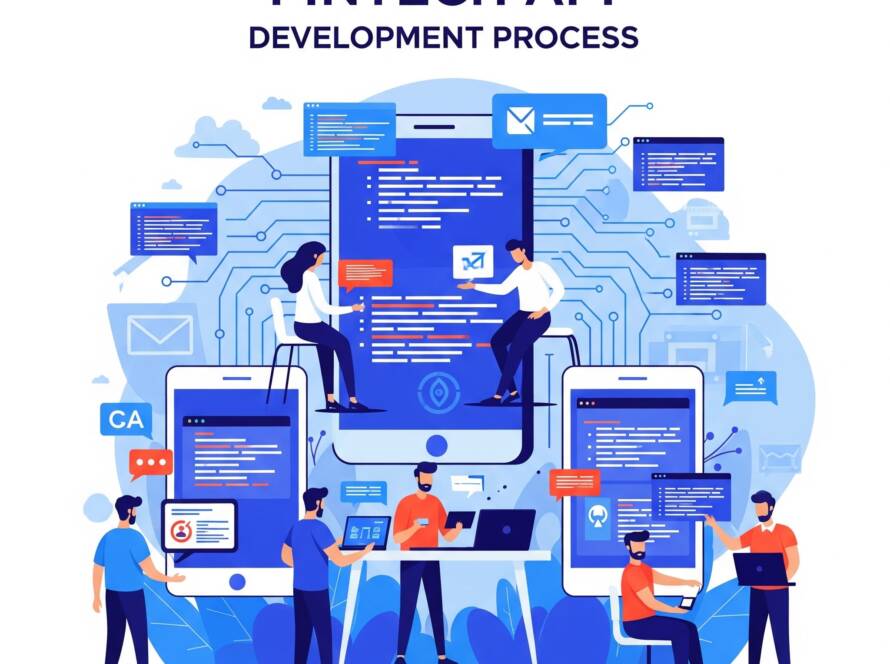Artificial intelligence softwares are very effective whether they are being utilised for business, for any automation, or for academic purposes. So, humans can save a lot of time by developing effective AI software that is able to cater to their everyday tasks. Hence, to create artificial intelligence software there are certain steps that are needed to be followed in order to effectively develop AI software that could follow our instructions and work accordingly.
How to Create AI Software in 10 steps
Below are the 10 basic steps that should be followed for artificial intelligence software development;
- Understanding the requirement or the problem that needs to be solved through AI software development
- Feeding the Data to your AI Software
- Algorithms utilisation for performing the required tasks from AI
- Training the model on the given data so that needed tasks could be performed efficiently
- Model evaluation so that needed changes or errors could be evaluated
- Security and privacy check so that ethical practices are to be followed
- Scalability to handle the future increase in scale of the AI software
- Designing the UI of the AI software
- Working on Backend and Deployment on an appropriate server
- Continuous training and improvement of AI software
1. Understanding the requirement or the problem that needs to be solved through AI software development
AI software development process is certainly complex, but the first step for any human or individual who is trying to automate their operations is to understand that what do they actually need, what is their actual requirement. For instance; if an individual required a chat bot who is able to cater their clients when they are sleeping, hence they need to understand that AI should also properly understand their business in order to deal with the clients in an effective manner.
For that, they also need to understand that if they have a particular website, then this to build AI software first should crawl their services page in order to understand what kind of services they are offering to their clients. After crawling the service pages, the bot will be able to tackle any questions that are posed to it. Hence, there is a need to understand all of these requirements. To effectively create AI software that will be able to cater to the needs of the client.

2. Feeding the Data to your AI
AI requires data to be used to perform every particular operations, without data AI cannot work, that data is fed to AI so that it can perform effectively. For instance, chatbots use the internet and tons of tons of data, statistics and human conversations. Hence for an AI bot to understand what humans are asking of it, it has to first understand their language, their way of talking, their behaviours etc. By understanding all of this, it is effectively able to communicate and provide answers to what humans are asking of it.

3. Algorithms utilisation for performing the required tasks from AI
Among all the steps to create AI software, this particular step is very important because algorithms are a basic need to build AI software development process. Deep learning algorithms, decision trees, neural networks, or support vector machines could be utilised effectively in order to create any intelligent AI software. Let’s take an example of sentiment analysis, for instance, if sentiment analysis is to be conducted for climate change perception among the people then NLTK natural language toolkit could be used effectively in Python to understand the perception or the sentiment of people regarding climate change. Additionally, Tweepy library could also be used in order to attain the tweets of people regarding climate change and then NLTK library could be further used to comprehend and to understand the sentiment of people. Additionally, support vector machines could be later used to continue the process.

4. Training the model on the given data so that needed tasks could be performed efficiently
Again, as AI software development guide this step is one of the most pre-eminent because the AI to be efficient enough to handle the everyday tasks, have to trained effectively and a significant number of times to be able to perform effectively whenever a problem has been posed at it. Hence, to build AI software, preparation of data set on which the AI Software will be trained, model parameters initialisation, for instance, their weights and parameters, selection of model if NLTK should be used or computer vision library should be used. Xavier/Glorot initialization is able to intialise the initial values properly.
Then forward process is being followed in which input data is being given to the model and then predictions are being provided. to get more accurate predictions, the model is needed to be trained numerous times. Then loss functions which is also known as cost function is used that is able to predict that how different the model’s predictions are from the true target values, hence error estimation is also being calculated. Mean squared error is used to minimize this loss function which is the main goal.
Then for the minimisation of the loss back propagation is being carried out for determining that how much each parameter should be adjusted to minimize the loss. Optimization Algorithm is then used to update the model’s parameters in the direction that minimizes the loss function. Then fine tuning process is being conducted through Hyperparameter Tuning. Next few processes include; Validation and Early Stopping, Testing, Post-processing and Deployment and continuous learning and development is being followed.

5. Model evaluation so that needed changes or errors could be evaluated
For this particular process of creating an AI software, the dataset is divided into various subsets, this data is then divided into; Training Data, Validation Data, Testing Data. Then performance metrics selection could be performed through Accuracy check, Precision, Recall, and F1-score, Mean Absolute Error (MAE), ROC AUC, R-squared (R2). For model evaluation both validation and testing datasets are used. Other steps are as follows; Interpretation of Results, Model Comparison, Addressing Overfitting, Visualization, Interpretability, Iteration, Documentation.

6. Security and privacy check so that ethical practices are to be followed
Privacy and security checks are very important because whoever is going to use the AI bot also needs security and privacy, also the person who has created his or her AI bot needs to make sure that their data and the model on which they have trained their AI software is being secured through additional layers of security.

7. Scalability to handle the future increase in scale of the AI software
The AI software should be deployed on such servers that if in future, the traffic increases, the AI bot is able to cater to larger audiences, one can take the example of Chat GPT in this case, that sometimes it is not able to respond to users because of extensive load on its servers and because of extensive traffic demands, hence the AI software that is being developed should be scalable and could be able to cater unlimited number of users.

8. Designing the UI of the AI software
Customers whenever they visit a web platform or a mobile application then they are attracted by its design, hence to build ai software while its design creation should be able to cater the aesthetics or the visuals that are required by the users. The visuals and design should be attractive enough for the users so that they would always like to use it and continue to enjoy it in the future. Hence, continuous changes according to users liking should also be made.

9. Working on Backend and Deployment on an appropriate server
One of the main AI software development challenges include its backend development which is a gigantic task but the selection of server and its backend helps the users also, if the server responds well to the request of the clients then the AI software development could be deemed as successful, because nowadays even AI chat bots are multi-modal and users input their pictures, voices, and videos to attain their required output.

10. Continuous training and improvement of AI software
Continous development is required to build AI software from scratch, and for that the model has to be assessed on timely basis. Not only this, the procedures that are explained above should be gone through again and again. A time line for maintenance could be created for continuous development of the artificial intelligence software.

Above stated 10 steps are one of the most important steps that could be followed in order to create AI software by scratch.

